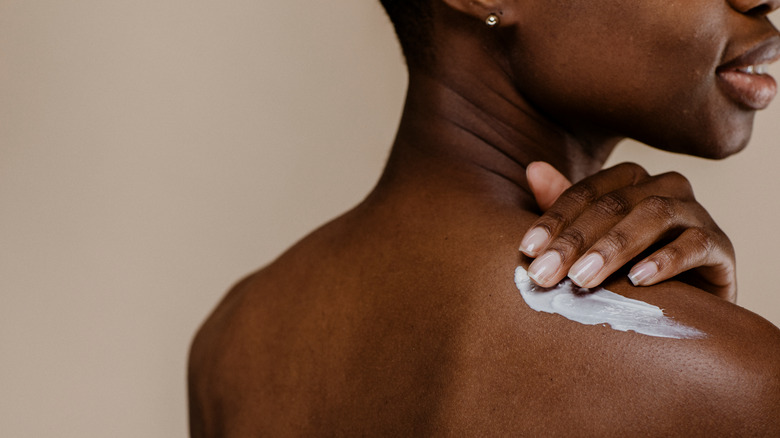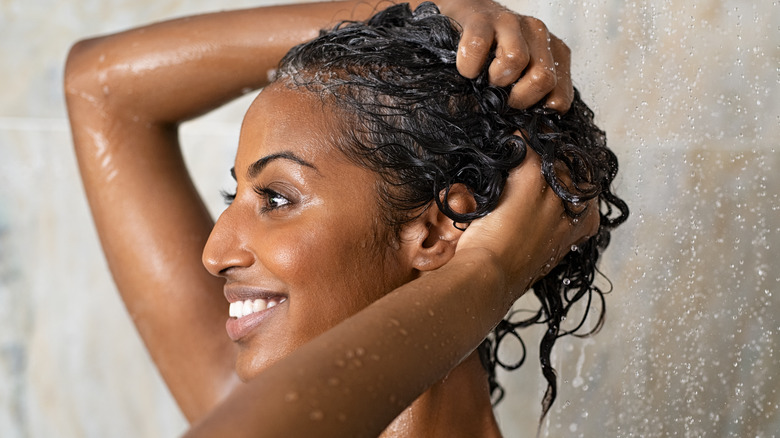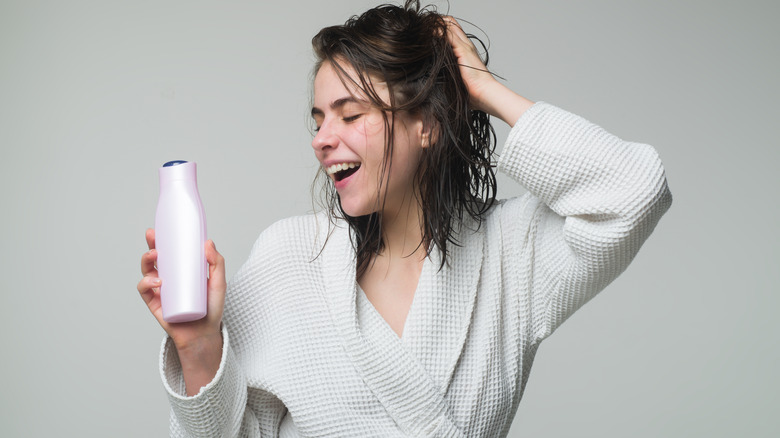If You Struggle With Bacne, This Could Be The Cause
Acne can take an emotional toll and wreck your confidence. This is an unfortunate truth whether you're dealing with facial acne, body acne, or both. And body acne is more common than you might think. As dermatologist Rebecca Marcus tells Real Simple, "Many people who suffer from facial acne also experience breakouts on their chest and back."
If you're suffering from back acne — or "bacne" — it could be caused by the same triggers as acne on your face or shoulders. These areas have the most oil glands and are vulnerable to factors like excess oil, clogged pores, and bacteria proliferation (per Mayo Clinic). In other cases, bacne springs up for unique reasons of its own. In either case, bacne is generally treatable. It may even be preventable, without ever needing to step foot in a derm's office or stock up on special skincare products. And it might all come down to one easy fix in the shower.
Your conditioner could be causing stubborn bacne
Showering is supposed to keep your skin clean and banish the sweat and dirt that can lead to pimples. But a common step in your shower routine could actually be the cause of pesky acne on the back and shoulders.
It all comes down to your hair conditioner. Thick, moisturizing conditioners may do wonders for your mane, but their ingredients could cause bacne and other body acne. As dermatologist Ivy Lee, M.D., tells Well+Good, "We see hair-care products clogging the pores and creating acne-like lesions." She says that oily conditioners can clog pores, leading to blemishes on the back, as well as along the hairline, on the back of the neck, and on the shoulders — essentially, anywhere where your conditioner may drip.
Discussing acne-causing hair care ingredients with The Klog, dermatologist Rachel Nazarian reveals, "Ingredients such as petroleum, silicone, cocoa butter, sodium lauryl sulfate, ammonium lauryl sulfate, mineral oil, jojoba oil, coconut oil, and lanolin can ... trigger acne, especially if left on the skin."
How to fight bacne caused by conditioner
We admit, the list of acne-causing conditioner ingredients to look out for is overwhelming. The American Academy of Dermatology Association suggests keeping it simple by looking for products with the phrases "won't clog pores," "oil-free," "non-comedogenic," or "non-acnegenic" on the label.
But if you're already attached to your conditioner and it does contain bacne-causing ingredients, you may not have to give it up just to save your skin. Instead, use your favorite conditioner as you always do, but, as trichologist Michelle Blaisure explains to Well+Good, you should "rinse not only your hair but the body as well after conditioning to ensure there isn't any product residue on the back." So if you usually suds up your body while leaving your conditioner in, try conditioning first and thoroughly washing your body — especially focusing on the back and shoulders — only after washing out your conditioner.
Another easy hack is to clip your hair up while conditioning. Keeping your hair off your skin while letting your conditioner work its magic means less product will end up on your back in the first place.


